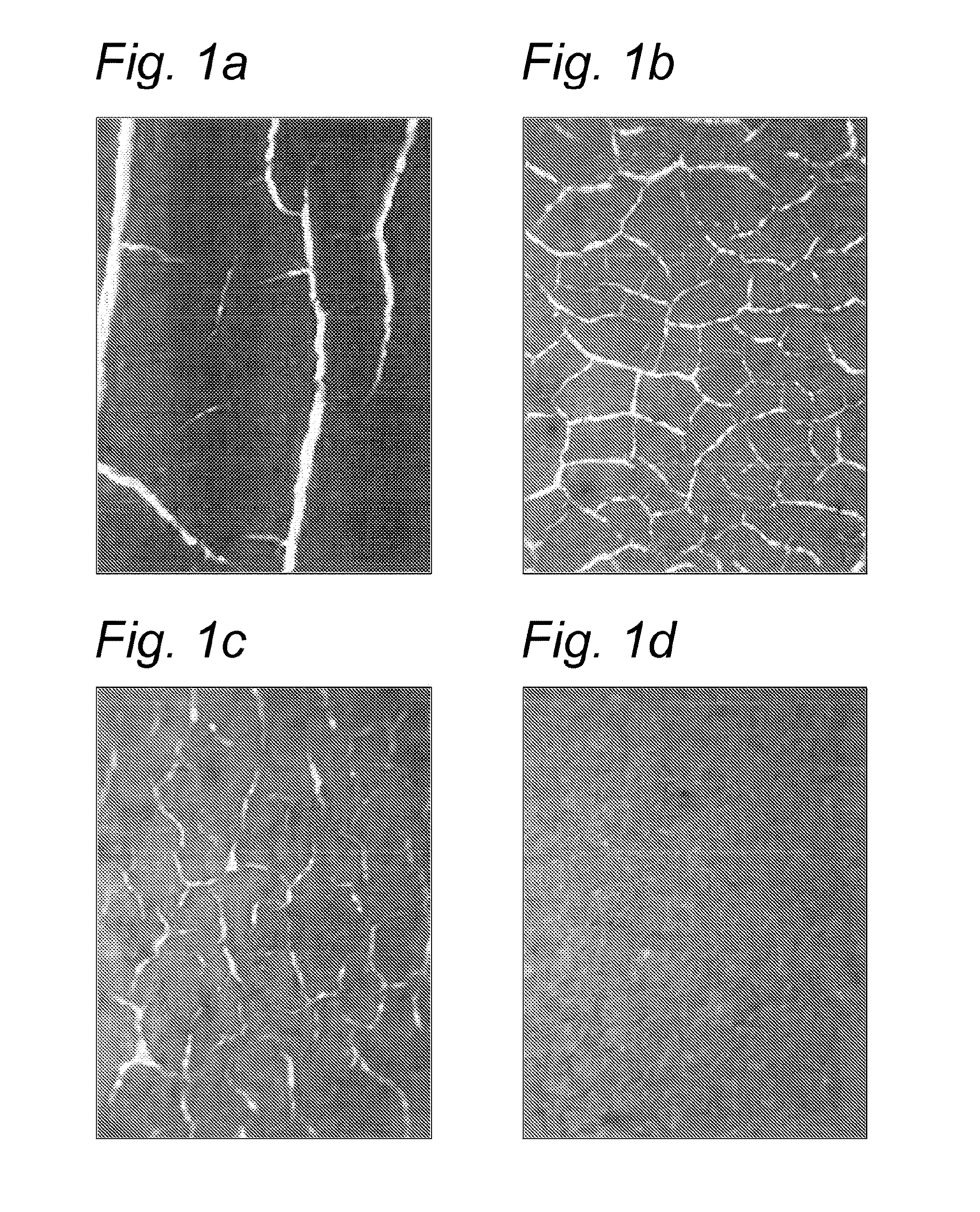Anti-cracking agent for water-borne acrylic paint and coating compositions
a technology of acrylic paint and anti-cracking agent, which is applied in the direction of coatings without pigments, pulp properties modification, textiles and papermaking, etc., can solve the problems of affecting film cracking, and failure to adhere to the substrate surface, etc., and achieves significant impact on the rheological properties and/or viscosity of the composition, and high beneficial rheological behaviour
- Summary
- Abstract
- Description
- Claims
- Application Information
AI Technical Summary
Benefits of technology
Problems solved by technology
Method used
Image
Examples
example 1
Preparation of Parenchymal Cellulose Composition Containing Particulate Cellulose Material
[0109]Fresh sugar beet pulp obtained from Suikerunie Dinteloord (NL) was washed in a flotation washer in order to remove sand, pebbles, etc.
[0110]In a stirred tank (working volume 70L) heated with steam), 16.7 kg of washed sugar beet pulp having a solids content of 15% DS (2.5 kg DS in the batch) was introduced and tab water was added to a total volume of 70 L. The mass was heated with steam and, once the temperature reached 50° C., 1200 gram NaOH is added. Heating was continued to reach a final temperature of 95° C. After 45 minutes at 95° C., the mixture was subjected to low shear for 30 minutes (using a Silverson BX with a slitted screen. After a total period of 3 hours at 95 ° C., low shear was applied again for 60 minutes (using the Silverson BX with an emulsor screen with appertures of 1.5 mm), during which the temperature was kept at approximately 95° C.
[0111]Reduction of the particles w...
example 2
Preparation of Parenchymal Cellulose Composition Containing Particulate Cellulose Material
[0115]Fresh sugar beet pulp (320 kg, 24.1% ds) obtained from Suikerunie Dinteloord (NL) was washed in a flotation washer in order to remove sand, pebbles, etc.
[0116]The washed sugar beet pulp was transferred to a stirred tank (1000L) and dilutued to a ds concentration of 8% (800 kg). Multifect pectinase FE (Genencor, 139 units / g ds) was added and the suspension was heated to 45° C. After 48 h the suspension was pressed using a membrane filterpress (TEFSA) and the resulting solid material containing the cellulose material was isolated (216 kg 12% ds).
[0117]A portion of the resulting cellulose material (20 kg) was introduced in a stirred tank (working volume 70 L) and tab water was added to a total volume of 70 L. The mixture was heated to 95° C. and subjected to low shear for a total period of 3 hours at 95° C. (using a Silverson BX with a slitted screen. Then, low shear was applied for a furthe...
example 3
Anti-Cracking Properties of the Parenchymal Cellulose Material in Water-Borne Acrylic Paint or Coating Compositions
[0122]In this example, the following components are used:[0123]Setaqua 6462, water-borne styrene-acrylate dispersion, solids content 44 wt. %, MFFT 25° C., Nuplex Resins[0124]Water mill base; amount of water required to disperse solids in the mill[0125]Span 20, sorbitol lauric acid ester, Croda[0126]Disperbyk-190, VOC-free wetting and dispersing additive for aqueous pigmented systems, Byk[0127]Byk 022, VOC-free silicone defoamer for aqueous coatings, Byk[0128]BYK 028, VOC-free silicone defoamer for aqueous dispersion coatings, Byk[0129]Texanol, 2,2,4-trimethyl-1,3-pentanediol monoisobutyrate, Eastman[0130]Finntalc M40, magnesium-silicate talc powder, Mondo Minerals[0131]Propylene glycol[0132]Halox Flash X-330, corrosion / flash inhibitor, Halox[0133]Acrysol RM-825, non-ionic urethane rheology modifier, designed for formulating paints, Rohm and Haas[0134]Kronos 2300, titan...
PUM
| Property | Measurement | Unit |
|---|---|---|
| Temperature | aaaaa | aaaaa |
| Temperature | aaaaa | aaaaa |
| Temperature | aaaaa | aaaaa |
Abstract
Description
Claims
Application Information
 Login to View More
Login to View More - R&D
- Intellectual Property
- Life Sciences
- Materials
- Tech Scout
- Unparalleled Data Quality
- Higher Quality Content
- 60% Fewer Hallucinations
Browse by: Latest US Patents, China's latest patents, Technical Efficacy Thesaurus, Application Domain, Technology Topic, Popular Technical Reports.
© 2025 PatSnap. All rights reserved.Legal|Privacy policy|Modern Slavery Act Transparency Statement|Sitemap|About US| Contact US: help@patsnap.com

